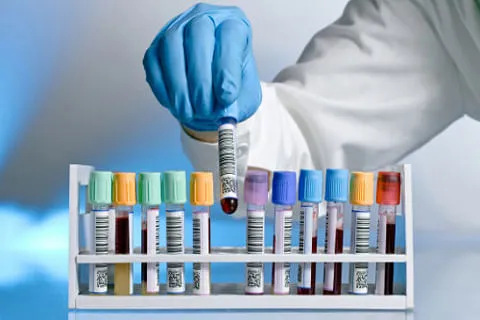DR. JAVEED KAKROO
Health care services have benefited from countless technological advances and truly laboratory medicine contributed the best that, if on the one hand, contributed to a better quality of life, on the other hand increased the risk of incidents that lead to unnecessary harm to patients: the Adverse Events (AEs).
Recently there were great discussions about who will sign the laboratory reports. It only clarifies the administrative and regulatory issues, it is certain that everyone fights for their rights, for survival. We have no regulatory authority truly functioning on Laboratory matters it was free for all, whatever said and done laboratories are areas most prone for errors, Laboratory testing is a highly complex process and a clinician can diagnose a complex case with great experience and we cannot perform laboratory test without right reagents and well-trained technologists, although laboratory services are relatively safe, they are not as safe as they could or should be.
Although tens of thousands of people around the world suffer harm, many times disabling, and even die because of unsafe acts in health care, little is known about frequency of occurrence Clinical laboratories have long focused their attention on quality control methods and quality assessment programs dealing with analytical aspects of testing.
Today many wish to get accredited with NABL / NABH assessments However, a growing body of evidence accumulated in recent decades demonstrates that quality in clinical laboratories cannot be assured by merely focusing on purely analytical aspects, Our system of working truly lacks many matters and materials and many complain on ac-creditors are more documentation evaluators than many realities, and several shortages has a regular process, I wish to restrict to Diagnostic Microbiology Defining an error means Many mistakes in the Total Testing Process are called “laboratory errors”, although these may be due to poor communication, action taken by others involved in the testing process (e.g., physicians, nurses and phlebotomist s), if we look at the laboratory requests at least 70% of the requests do not contain any information for the purpose of testing and their provisional diagnosis, or poorly designed processes, and many times in teaching hospitals the student nurses are assigned to collect the specimens and ultimately Microbiology reports are erratic results when an improper specimen is collected all of which are beyond the laboratory’s control. We send many requests to send the specimens with few clinical details, and it rarely works even in teaching hospitals.
In the end there is evidence that laboratory information is only partially utilized. Some clinicians do not remember they requested the tests, and in due process the matters become casual, I am sincere at least 50% of the laboratory results are not even collected, However we also become indifferent and used to clear the accumulated reports and odd intervals, When I was a House surgeon in 1972 it was the duty of us to collect the reports from laboratory and present before our learned teachers, It is certainly happening in many good Institutions
A lot of people strive to make their microbiology laboratory “error free”. Whilst this could be said to be an admirable goal, maybe we need to think about what we wish for a little further. A progressive laboratory is going to make errors. You cannot introduce a new software system into the lab without making mistakes. You cannot develop a new assay without going through a teething process. You cannot develop an electronic requesting system without going through a lot of trial and error first.
METHOD TO CORRECT THE ERRORS – Recent document from the International Organization for Standardization (ISO) recommends a new, broader definition of the term “laboratory error” and a classification of errors according to different criteria. In a modern approach to total quality, centered on patients’ needs and satisfaction, the risk of errors and mistakes in pre- and post-examination steps must be minimized to guarantee the total quality of laboratory services According to norm ISO 22367:2008(8), identification of errors or incidents must be made through reviews of internal audits, incident notification reports, improvement opportunities and prospective processes of risk analysis. Further investigations aimed at increasing knowledge about impacts of laboratory errors on patient safety must suit concepts on actual and potential AEs, as well as their severity, to the International Classification for Patient Safety of WHO. (At least with this earlier document we can make matters work in orderly fashion)
BEST CHOICE TO LIVE WITH OPTIMISM IN LABORATORY MEDICINE – Of course we should try and anticipate where errors might happen, as well as analyzing ones that have occurred in order to reduce the chances of them happening again We certainly cannot improve by blame game as Microbiology is system needs many materials, agents, and above all humans to produce the desired results In the laboratory setting we also have to make a lot of decisions every day, and of course mistakes will be made. When they are made it is important to first ask, “How can we stop this happening again”, before even considering “Who?”
I wish laboratories would certainly improve if we have talented minds rather than gossiping tongues. Is this truly the problem in many teaching hospitals? I may be corrected if I am wrong.
The author is microbiologist, Infection control Auditor at Kidney Hospital Srinagar and can be reached at jkakroo@gmail.com






